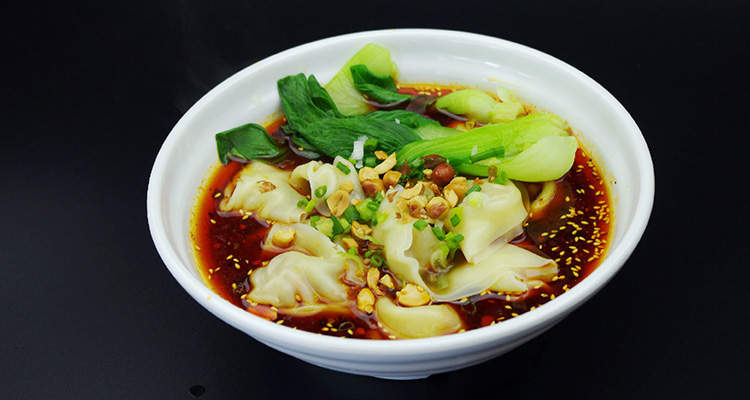Sichuan Chao Shou: Spicy Wontons Guide
Sichuan Chao Shou: Spicy Wontons Guide
1.What is Chao Shou?
Chao shou (often called Sichuan wontons) are a beloved snack from Sichuan and nearby Chongqing, famous for their paper-thin wrappers and succulent, well-seasoned pork filling. Although essentially a regional name for wontons, chao shou stands out for its bold flavors and distinctive red-oil dressing that defines the Sichuan eating experience.
The soul: bright red oil and mala aroma
The hallmark of chao shou is the glossy red oil poured over the cooked dumplings. This sauce blends chili oil, Sichuan pepper powder, soy sauce, minced garlic, and sometimes fermented bean paste and a touch of vinegar. The result is a fragrant, slightly numbing (mala) heat layered with umami and a toasty chili aroma that awakens the palate.
2.Ingredients and craft
A classic chao shou filling centers on finely minced pork mixed with light seasoning to keep the meat juicy and tender. Cooks often add a little ginger, scallion, and sesame oil. The wrapper must be thin enough to deliver a delicate mouthfeel but sturdy enough to hold the savory juices. After filling and folding, the dumplings are briefly boiled until they float, then drained and dressed immediately with the red oil and toppings.

3.Serving styles and textures
You can find chao shou served ‘dry’—tossed in red oil and seasonings—or in a light, clear broth with the oil added separately. Toppings like chopped scallions, crushed peanuts, and a sprinkle of ground Sichuan peppercorns add crunch and fragrance. Street vendors favor the dry red-oil style for quick service, while teahouses and restaurants may present a more subtle, soupy version.
4.Regional differences: Sichuan versus Chongqing
While both regions prize heat, Chongqing snacks tend to push the spice level even higher and often include stronger smoky chili notes. In Chengdu, the red oil might be balanced with a hint of sweetness and more aromatic Sichuan pepper. Each city offers its own interpretation, so tasting chao shou in multiple neighborhoods is a delicious way to explore local flavor nuances.

5.Cultural context and everyday life
Chao shou is more than a snack—it’s woven into daily routines. Locals enjoy it for breakfast, late-night meals, or a quick street-food lunch. Affordable, filling, and quick to prepare, chao shou reflects Sichuan’s love of communal, bold-flavored dishes. Eating chao shou with friends over tea or sharing plates at a neighborhood stall is an authentic local experience.
6.Traveler tips and ordering advice
If you’re sensitive to heat, ask for ‘mild’ (qingwen qing re) or request less chili oil; many vendors can adjust spice levels. Vegetarian options may be available with mushroom or tofu fillings—ask for ‘sujiao’ or ‘su chao shou.’ Pair chao shou with a cooling beverage like soy milk, jasmine tea, or a cold beer to balance the spicy, numbing kick.

7.Where to try them in Chengdu and Chongqing
Look for chao shou at morning markets, teahouses, and bustling night-food alleys. In Chengdu, try old city lanes near Wuhou Temple or Jinli Street; in Chongqing, explore riverside markets and Jiefangbei for lively street vendors offering local variations.
8.A few fun facts
Chao shou’s name literally means ‘folded hands’ in some dialects, referring to the way the wrapper is pinched.
The red oil technique is used across many Sichuan dishes, making it a signature cooking method.
Vendors often guard their chili oil recipes jealously—every bowl can taste slightly different.

9.Final tasting note
Chao shou is an ideal introduction to Sichuan street food: simple to eat, rich in sensory contrast—silky skin, juicy meat, crunchy toppings, and a memorable spicy‑numbing finish. Try several styles across different stalls to find your favorite version.
Author: I am a travel writer and food localization specialist who focuses on authentic Chinese cuisine for international visitors. I researched regional traditions and translated local terms to help travelers taste Sichuan like a local.


